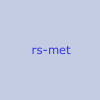Hi Robin,
I have read your paper on frequency warping http://www.rs-met.com/documents/dsp/Two ... ctions.pdf. It was an interesting read and I have been thinking about the two interpretations you describe. This dates back some time so this may not be fresh in your memory at all. I have a few comments to your paper and a question.
Although I don't think you explicitly state that the two interpretations are equivalent then this is assumed implicitly I believe. Because the two interpretations are equivalent it is interesting to take a look at their computational complexity. Interpretation two seems much more computationally complex than interpretation one. Can you think of any scenario where interpretation two may be used instead of interpretation one?
The two methods/interpretations are only equivalent if the prototype filter is IIR. I don't think that they are equivalent if the prototype is FIR. Do you agree?
Here is my own layman version of the two viewpoints of performing the frequency warping. In the first interpretation the frequency warping is "embedded in the filter" in the sense that it is incorporated in a new set of filter coefficients. The input is thus filtered with a "new" filter. In the second interpretation the frequency warping is performed on the input signal itself before passed through to the filter (the filter is not changed). This is more clearly seen if the difference equations are written
u[n] = -c*x[n] + x[n-1] +c*u[n-1]
pp[n] = y[n-1] + c*p[n-1]
y[n] = b0*k*x[n] + b1*k*u[n] - a1*k*pp[n]
p[n] = -c*y[n] + pp[n]
I have used the convention of writing the allpass filter (-c + z^(-1))/(1-cz^(-1)). Your way of writing the allpass filter caused me some problems to begin with.
Anyway, thanks for an interesting paper!
niarn
Frequency warping paper
-
Music Engineer Music Engineer https://www.kvraudio.com/forum/memberlist.php?mode=viewprofile&u=15959
- KVRAF
- 4285 posts since 8 Mar, 2004 from Berlin, Germany
they are equivalent in the sense that the filters have identical transfer functions.niarn wrote:Although I don't think you explicitly state that the two interpretations are equivalent then this is assumed implicitly I believe.
i think, it depends on the context in which the filter is used. running the filter is more costly in the second case, but coefficient conversion in in the first case is costly too, so if you need to do it at every sample, it may eat up your saving in running the filter. moreover, the embedded-allpass case is a different filter topology which may lead to different behavior under time-varying conditions.Because the two interpretations are equivalent it is interesting to take a look at their computational complexity. Interpretation two seems much more computationally complex than interpretation one.
if the prototype is FIR, the problem unit-delay-in-the-feedback-path does actually not even arise, because there is no feedback path. the transfer-function warping should behave in the same way as in in the IIR case, if i'm not mistaken.The two methods/interpretations are only equivalent if the prototype filter is IIR. I don't think that they are equivalent if the prototype is FIR. Do you agree?


